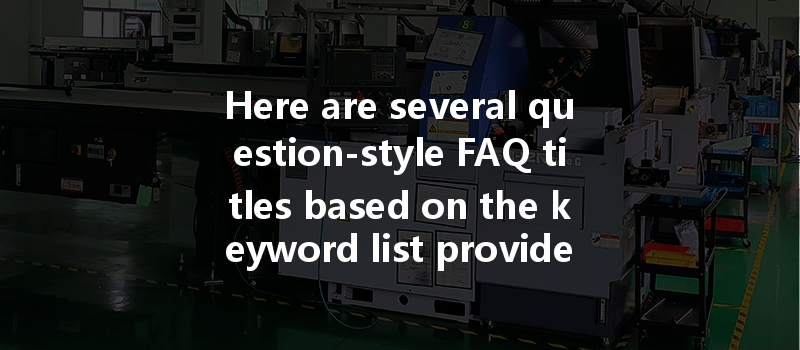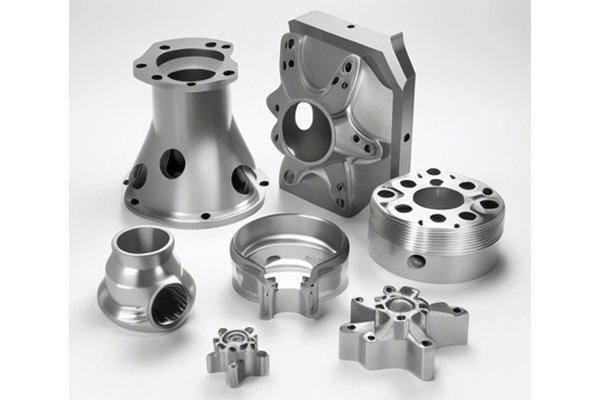Captivating Start
Did you know that CNC (Computer Numerical Control) machining is responsible for creating over 80% of the parts used in the aerospace sector? That’s a staggering statistic considering the level of precision and reliability required in that industry. In an age where technology continually evolves, manufacturers are challenged to not only keep pace but also to innovate processes that can accommodate increasingly complex designs and stringent quality standards. CNC machining has emerged as a pivotal solution, revolutionizing how prototypes and production parts are crafted. But what exactly makes CNC machining so valuable, and how can it be harnessed effectively in modern manufacturing?
Understanding CNC Machining
CNC machining refers to the automated process of operating machine tools through programmed commands. Unlike traditional machining, which often relies on manual adjustments, CNC machines utilize software to dictate the movement and operation of tools, ensuring high precision and repeatability. This technology is versatile and can handle a range of materials including metals, plastics, and composites.
Why CNC Machining Stands Out
The Role of CNC Machining in Prototype Development
Creating a prototype is often the first step in product development. It allows designers to test their concepts, identify potential issues, and make necessary adjustments before moving to full-scale production. Here’s how CNC machining enhances this phase of development:
CNC machining is an ideal method for rapid prototyping due to its high speed and accuracy. Designers can produce prototypes quickly, iterating on their designs based on real-world feedback. The reduced lead time enables faster market entry, giving businesses a competitive edge.
CNC machines can work with a wide range of materials, allowing prototype developers to test different options suited for the final product. From aluminum and titanium to plastics and composites, the ability to explore various materials ensures the final product meets the desired specifications.
CNC machining provides prototypes that conform tightly to specifications and dimensions. This precision is essential not only for functionality but also for validation testing, where prototypes must meet stringent industry regulations.
While initial setup costs can be high, the efficiency of CNC machining can lead to overall cost savings in prototype development. The ability to quickly produce and iterate designs results in shorter development cycles and less expenditure on materials.
Strategies for Effective CNC Machining in Prototyping
While CNC machining offers numerous advantages, realizing its full potential requires careful planning and execution. Here are some strategies to maximize the benefits of CNC machining during prototype development:
The design phase is critical. Investing in top-tier CAD software allows engineers to explore complex designs and provides better visualization. This level of detail will translate directly to more accurate CNC programs and ultimately, better prototypes.
Different materials and designs require specific tools. Analyzing the characteristics of each material can help in selecting the optimal tooling for CNC machining, enhancing material removal rates and surface finishes.

Choose the right machining process based on complexity and volume. For instance, milling and turning are great for complex shapes, while laser cutting might be more efficient for simpler forms. Understanding the strengths of each process plays a crucial role in reducing costs and enhancing outcomes.
Establishing a rigorous quality control process ensures that prototypes meet specifications. This can involve both in-process inspections and final assessments to ensure dimensional accuracy and surface finish quality.
Collaboration between engineers, designers, and machinists is essential. Encouraging open communication can lead to insights that enhance design efficacy and machining efficiency.
CNC Machining in Industrial Applications
Beyond prototypes, CNC machining has found extensive applications in various industries. Let’s explore some key sectors where CNC machining is making significant strides.
Aerospace
In aerospace manufacturing, precision and reliability are paramount. CNC machining produces critical components such as turbine blades and fuselage parts, all of which must meet strict aeronautical specifications. Implementing advanced CNC techniques has led to reduced production times and improved part performance.
Medical Devices
The medical industry demands high levels of accuracy in device manufacturing. CNC machining enables the production of surgical tools and implants with exacting standards. As regulations evolve, the ability to prove traceability and compliance through CNC machining documentation becomes invaluable.
Automotive
The automotive industry relies heavily on CNC machining for component production, from engine blocks to intricate dashboard parts. With the rise of electric and autonomous vehicles, the need for innovative designs combined with high efficiency makes CNC machining indispensable.
Electronics
CNC machining is employed in the electronics sector to manufacture casings and internal components with precision. Given the trend towards miniaturization, CNC capabilities enable manufacturers to produce smaller, highly complex components without compromising quality.
CNC Machining: An Environmentally Friendly Approach
As industries strive for sustainability, CNC machining technology presents several environmental benefits. Here are some ways CNC machining contributes to greener manufacturing:
CNC machining generates less wastage compared to traditional methods. The precision of CNC operations allows for better material utilization, reducing scrap and promoting sustainable practices.
Modern CNC machines are often equipped with energy-efficient technologies that minimize power usage. Companies that invest in such machines can significantly reduce their overall carbon footprints.
Many materials used in CNC machining, such as metals and plastics, are recyclable. By emphasizing recycling and responsible sourcing of materials, CNC machining can align more closely with environmental goals.
CNC machining has profoundly shaped modern manufacturing, offering unparalleled precision, efficiency, and versatility. From rapid prototyping to the production of complex parts across diverse industries, the benefits are clear. By adopting effective strategies and continuously integrating technological advancements, manufacturers can leverage CNC machining to remain competitive in an ever-evolving market.
As we move forward, embracing CNC machining not only caters to today’s manufacturing needs but also paves the way for innovation and sustainability. The adoption of CNC technology is not merely an operational choice; it’s a strategic advantage that can influence the success and longevity of businesses. Remember, as the landscape of manufacturing continues to shift, keeping informed about the capabilities and benefits of CNC machining will be pivotal for any industry stakeholder.






